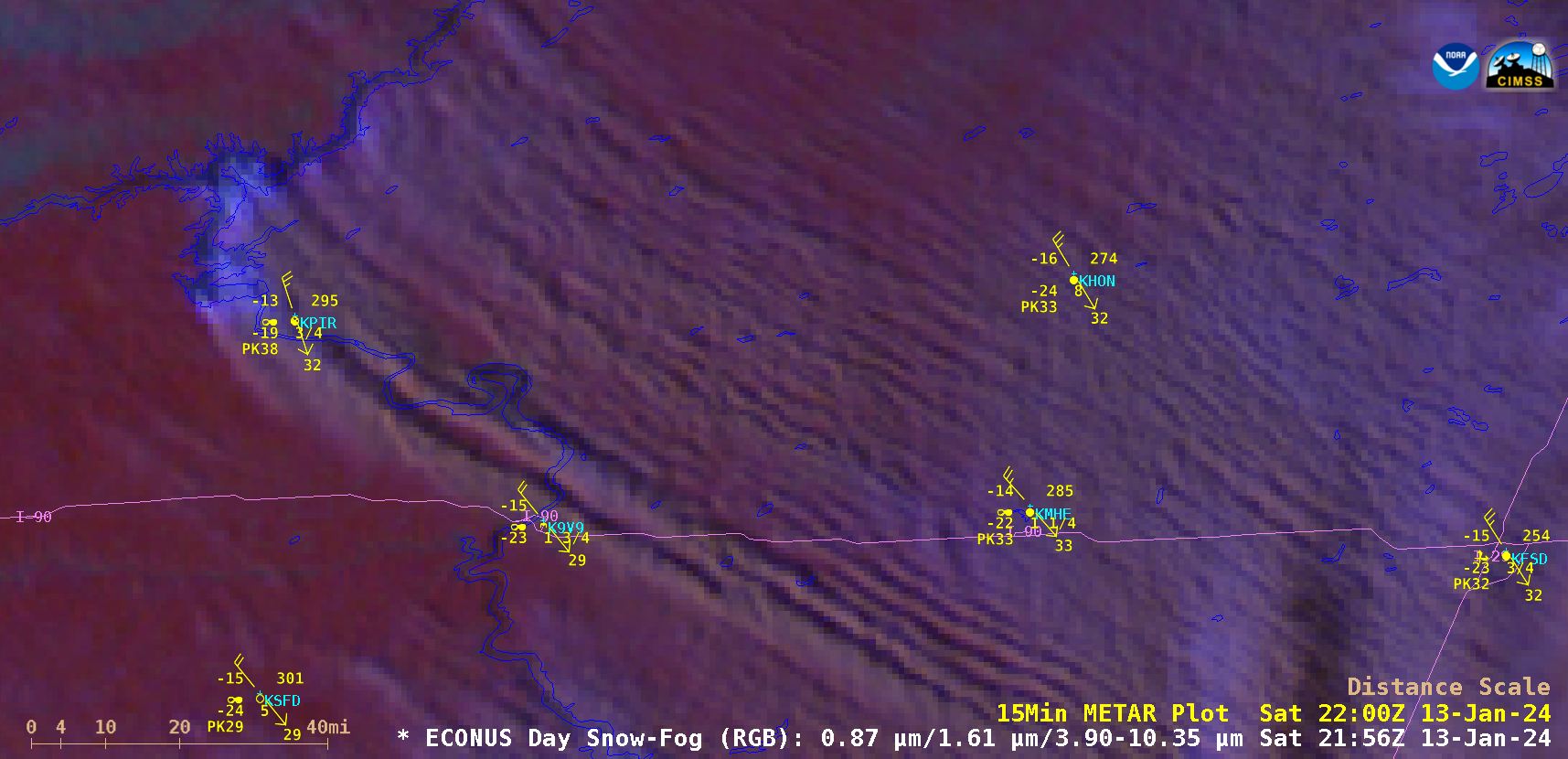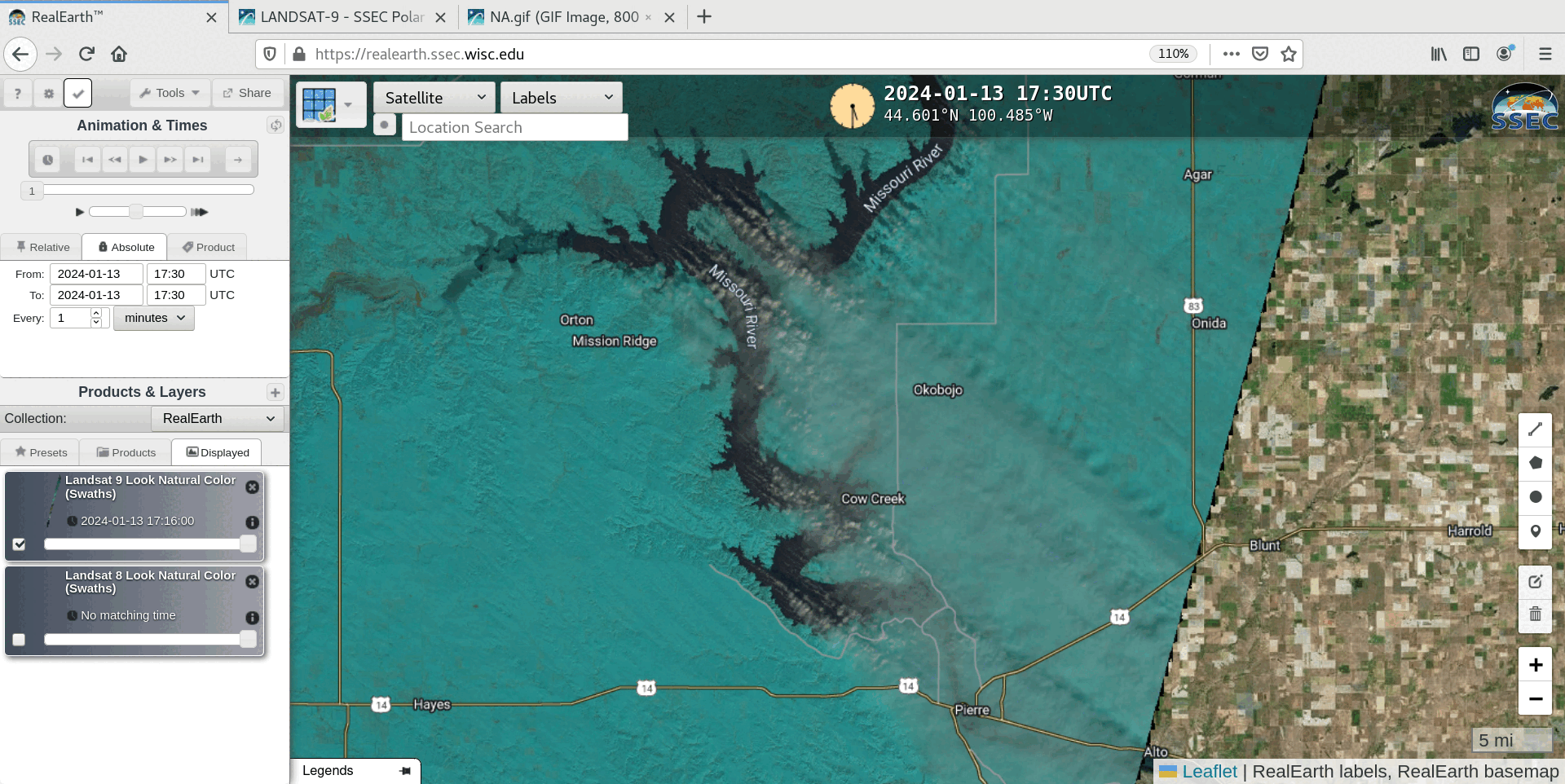“River effect” cloud bands and blowing snow in South Dakota

GOES-16 Day Snow-Fog RGB images, from 1501-2301 UTC on 13 January [click to play animated GIF | MP4]
A 30-meter resolution Landsat-9 “Natural Color” RGB (or Day Land Cloud RGB) image at 1730 UTC viewed using RealEarth (below) provided a more detailed look at a few of the cloud plumes developing over Lake Oahe and flowing southeastward. Open water appeared as dark shades of blue, while snow cover and ice appeared as shades of cyan.


